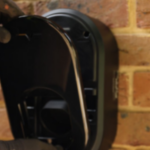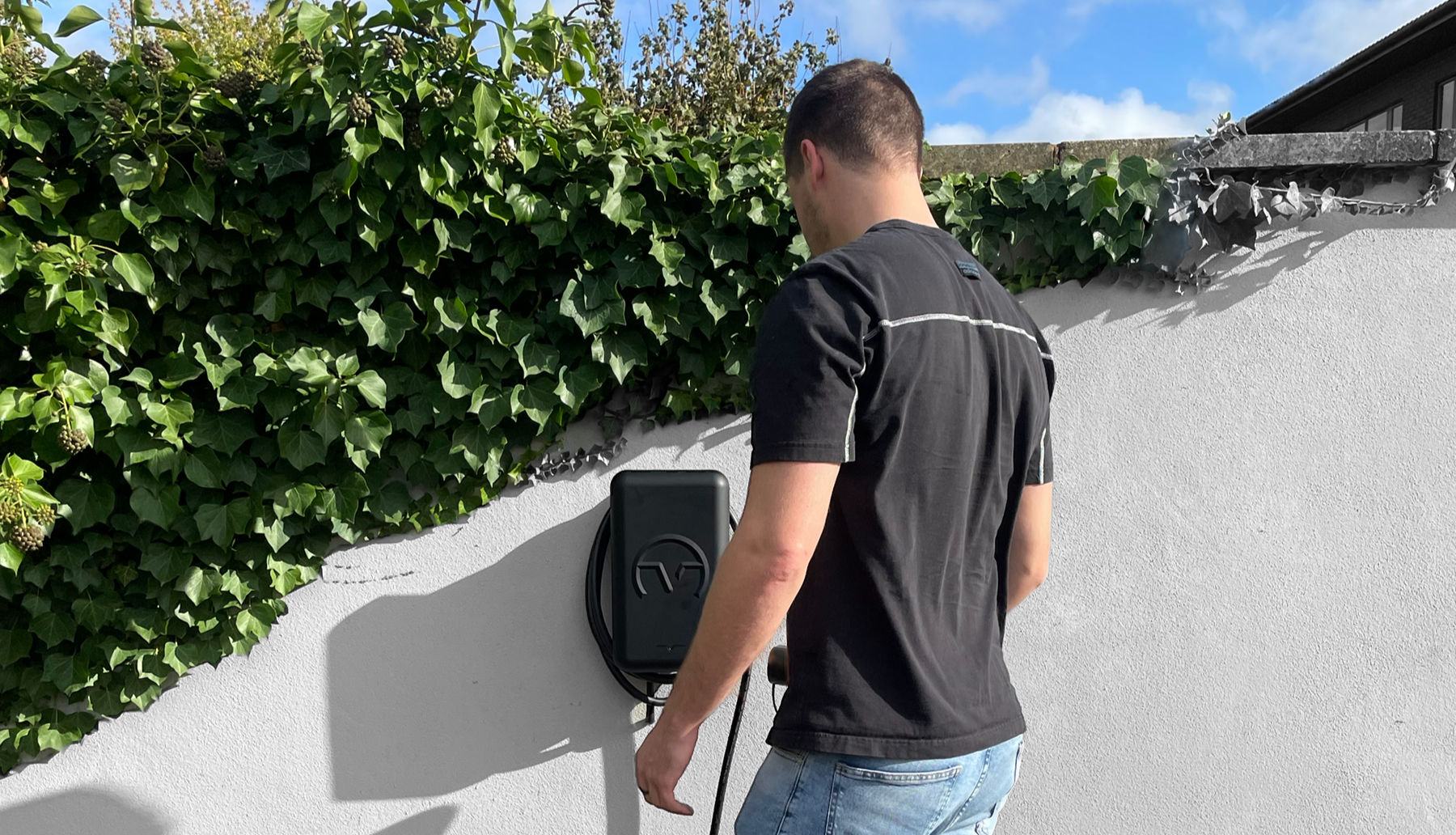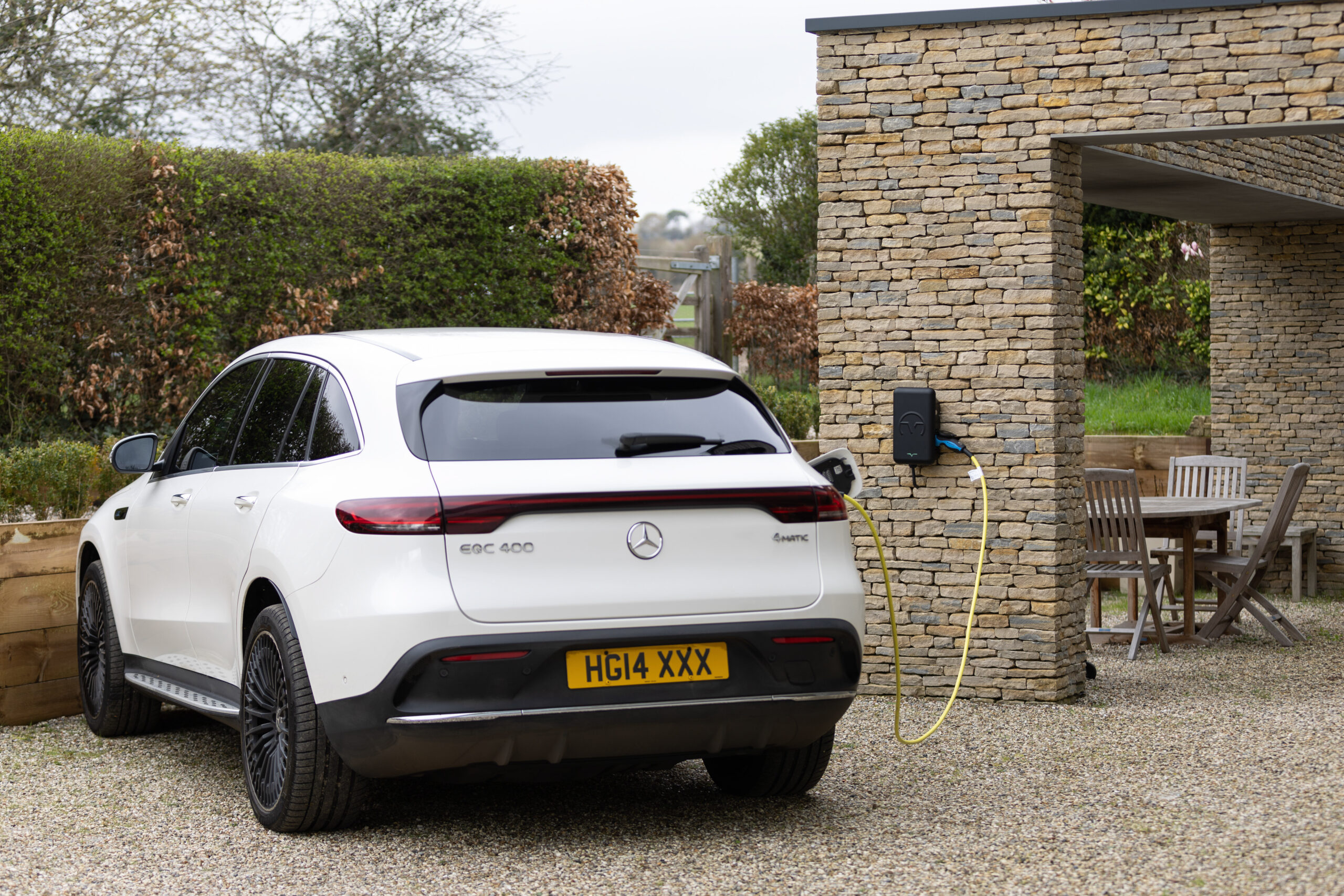
Standard vs non-standard EV charger installation
11 April 2024
The Benefits of having an EV home charger
16 April 2024How long does charging my EV take?
One of the primary benefits of driving an electric vehicle (EV) is the convenience of powering it up at home and not having to visit a petrol forecourt again.
This means installing an EV home charger. As sales of electric cars continue to soar, more savvy motorists are choosing this option.
Yet even though an EV home charger saves money and time, the big question that most drivers still ask is: how long will it take to charge my EV?
The answer is—it depends.
Loosely speaking, an EV with an average battery capacity of 60 kWh will take just under eight hours from empty to achieve a full charge. But factors such as charging levels, power output, charging capacity, state of charge, battery size, and temperature can all contribute to whether those eight hours need to be extended or reduced.
In this article, we’re going to take a deep dive into each of those considerations. By the end, you’ll understand the mechanics behind how long it will really take you to charge your electric car.
Factor #1: Charging options and levels
If you’re charging at home you’ll have two options available to you: You can use a standard domestic three-pin plug socket or an installed EV charger. This also means that you’ll be choosing between two levels of charging speed—level 1 and level 2.
Level 1 charging
Using your domestic socket (120 volts AC) means using the portable “granny charger” that comes with most EVs. This is categorised as level 1 charging as it’s the slowest option; a full charge could take anywhere between 8 to 24 hours.
We recommend that you only use this as an emergency backup as it can put a large load on the circuit, particularly if plugged in for a long time. This can increase the risk of electrical fires, which I’m guessing is really not how you want to start your day!
Level 2 charging
Your dedicated EV home charger will typically offer level 2 charging. This is much quicker, and alongside your home, can be found in workplaces and the majority of public chargepoints. Typically, it’ll take between 4-8 hours for a full charge, which makes them suitable for most charging needs.
Level 3 charging
Outside of the home, level 3 offers the fastest charge. Designed for rapid charging, level 3 chargers use direct current (DC), which makes them capable of delivering a high amount of power to the vehicle’s battery. Charging to 80 per cent can take as little as 30 minutes, though it does depend on vehicle type and the battery’s maximum charging rate. All levels also depend on power output, which leads us nicely to a second factor involved in the length of time it takes to charge your EV—power output.
Factor #2: Power output
The reason the granny charger is so slow in charging your EV is down to power output.
Power output is one of the primary determinants of how quickly you can charge your car. Measured in kilowatts (kW), it represents the rate at which electrical energy is delivered to the EV’s battery. Generally speaking, the greater the power output, the quicker your EV will charge.
EV granny chargers Vs. EV home charger
Granny chargers generally only charge a maximum of 2.3 kW, which means they deliver 2.3 kilowatts of electrical power to your electric car per hour of charging.
That said, they’re often even slower than that. Truth talk: it can take up to a day or more to power up your EV, particularly if your car boasts a bigger battery.
A dedicated EV home charger that has been installed by expert installers, however, will typically have a power output of 7 kW. Occasionally they can go up to 22 kW, but that’s quite rare for a home chargepoint; not all home circuits—or electric cars’ onboard chargers—are compatible with this output.
Plus, if you use your home charger to charge your EV overnight when charging rates are at their lowest, there’s no real need to supercharge your car at home.
EV home chargers use an AC (alternating current) power supply, which then converts into the DC (direct current) your car battery needs through its internal onboard charger.
Charging your EV using an installed home charger obviously differs from the rapid or ultra-rapid charging that can be accessed at en-route and motorway charging stations. With power levels rising to above 150 kW, these chargers use DC power directly, meaning your EV will receive a quicker charge.
Downsides to EV rapid charging
However, there are some downsides to using EV rapid charging. The first is the negative impact it can have on your wallet. Powering up your car at a public rapid charging station can cost you over three times as much as charging at home. Motorists are also subject to VAT at a whopping 20 per cent rather than the 5 per cent rate domestic electricity users pay.
Additionally, while the occasional rapid charge is fine for your car, consistently supercharging your EV at these speeds will most likely supercharge the decline of your battery too.
Not only might this involve having to replace your EV battery eventually, but in the meantime, it will also affect your battery’s range and energy storage capacity.
Factor #3: EV charging capacity
It’s not just the power output of the chargepoint you’re using that’s a factor in how fast it takes to fuel your car—the charging capacity of your electric vehicle plays a large part too.
Charging capacity, also known as battery acceptance rate, refers to the speed at which the battery’s onboard charger can take in electrical energy. The bigger the capacity, the quicker the charging process.
Conversely, that also means that charging speed will be restricted if your EV’s battery acceptance rate is less than the power output of the charging station you’re using.
So, for example, if you’re connected to a chargepoint with a power output of 22 kW but your EV battery’s charging capacity is 6.6 kW (which is the charging capacity of the Nissan Leaf), then it’ll only deliver 6.6 kW of electrical power to your EV per charging hour.
Of course, it will be delivered at a speed relevant to the charging point’s power output. So, if you’re using a rapid charger with a power level of 100 kW, then this amount of electrical power will be delivered faster than it would be if you were using a home car charger.
Factor #4: State of Charge (SoC)
Something else to be aware of is that the acceptance rate for an EV can decrease as it gets closer to being 100 per cent fuelled. This has to do with the EV battery’s state of charge (SoC).
Simply put, SoC tells you how much energy is currently in your EV’s battery, and is typically expressed as a percentage (i.e., 50 per cent means your electric car’s battery is half full).
But SoC can affect the length of time it takes to charge your car because it speeds up and slows down depending on whether it’s at the low or high end of a charge.
When it’s in a lower state of charge, charging will be faster. But as the battery approaches a higher SoC (i.e., your battery’s nearly full), charging begins to slow down.
If you want to charge your EV more quickly, then don’t charge it once it reaches 80 per cent. Luckily, when using a smart home charger, you can set the charger to stop at this point.
Most manufacturers advise EV owners to only ever top up their car batteries to this percentage. Not just because the charging rate slows down, but also because the health of your EV battery is maintained when kept below 100 per cent.
Factor #5: Size of EV battery
EV car batteries come in a variety of different sizes, ranging from 30-something kWh (the smallest battery size) up to 100 kWh. Plug-in hybrid cars typically have smaller batteries still.
Both small and big batteries have their benefits, though, most of which depend on your own preferences and driving behaviours.
For instance, a smaller-sized battery can meet most everyday driving needs. It is also typically lower in price and leaves a lesser carbon footprint over its lifetime.
An EV with a larger battery, however, can store more electricity and therefore offer a longer driving range. As a result, it may be a better choice for regular long-distance trips.
When it comes to the length of time it will take to charge either one, however, size matters. The bigger the battery, the longer it’s going to take to reach a full charge using the same power output as a battery of a smaller size—that’s just simple maths.
On the flip side, the bigger the battery, the fewer charge cycles it’ll require. This extends range—i.e., the distance an EV can travel on a full charge—and so can alleviate the worries some motorists have about running out of power while taking long trips.
Factor #6: Temperature
Finally, just as your petrol-powered car might struggle to start when the weather gets cold, your EV can also be impacted by winter chills. In such weather, it can take longer for the battery to charge as it becomes a little less efficient at transferring and storing energy.
Similarly, when it’s sweltering outside, the battery can also be negatively affected, with one US study highlighting how extreme heat can reduce battery range by up to 31 per cent.
However, it’s safe to say that here on the wet and windy British Isles, extreme heat doesn’t need to be at the top of your list of worries!
That said, you should still make a point of taking care of your car in all weather conditions and temperatures. It’s best to park your EV in an enclosed garage or under a car cover in both summer and winter, if possible.
Final words
While there’ll likely be times when you need to top up your EV while out and about, having a home charger will help minimise any stress you have around how long it will generally take you to charge your car.
If you get into the habit of plugging it in before you hit the hay, then you can take your eye off the clock and rest assured that while you’re dreaming, your car is charging.
If you’d like to know more about installing an EV home charger, you can drop a line to any of our team for information—we’re always happy to help. Or check out the top-of-the-range VCHRGD charger and free standard installation process Powerverse provides here.
About Powerverse
We’re industry experts in home energy management. Our easy-to-use app is built for your future electric home. It will effortlessly sync your solar, battery, heat pump, EV charger and more, helping you cut costs and your carbon footprint on your way to becoming energy-independent. Curious to know more? Talk to one of our experts.

